If you read last week’s newsletter, you know that CFA Institute has been working with Societies over the past year to develop a career-focused competency framework designed to guide members in acquiring necessary skills throughout their careers. The new framework generated quite a bit of buzz when was released last month at regional Society Leadership Conferences.
The Institute is actively seeking input about the new competency framework from you and your fellow industry professionals. To shed more light on what this all means, we interviewed Josh Howard, CFA, who served as CFAMN’s President in 2015-2017 and who was elected earlier this year to serve as the President’s Council Representative for our 12 Midwestern CFA Societies. Josh also is a member of the CPD (Continuing Professional Development) Design Council, the joint Society-Institute working group helping to create the new framework.
Mark Salter, CAE, ABC
Executive Director
Q. There was a lot of excitement in the room when CFA Institute unveiled the new competency framework for professional learning at last month’s Society Leadership Conference. Why the excitement? Why is this important?
Josh: The competency framework was designed to provide direction to members seeking to maintain competence in a current role or transition to a new role, and to provide an organizing framework for the Institute and Societies to offer relevant content to members. It includes soft skills, technical skills and ethics, which are mapped to specific job roles. The competency framework is the first step in developing a robust professional learning experience, and it will guide the development of the professional learning platform and content.
Many Society leaders were excited about the competency framework after the unveiling because they recognized it can help Societies organize their educational events and better track topic areas they are missing or could emphasize more. It will be useful in mentoring programs, job seeker seminars and event planning, and hopefully will add to member retention at the Society level.
The competency framework has been released to all members, and the CFA Institute is looking for feedback. To learn more about the competency framework and to provide feedback, please visit this link.
Q. Some people believe that CPD (aka Professional Learning) should never be mandatory – that it should be left up to the individual practitioner. What are the pros and cons of this position?
Josh: The main retort I hear to making professional learning mandatory is that members already do it, and a concern that the requirements and content won’t align with the education we need to stay relevant, which will turn a professional learning program into a time-wasting, box-checking exercise.
The argument for a mandatory professional learning program is that having it will demonstrate to clients, prospects, employers and regulators that CFA charterholders are part of a professional body that has ongoing learning requirements throughout their career. Having a requirement to engage in professional learning throughout a career will align CFA charterholders with most other professional designations and will help our global members meet their regulatory learning requirements. I have even heard stories from other countries that the lack of a mandatory professional learning program means CFA charterholders in those countries are not exempt from certain regulatory requirements, whereas members of other professional organizations with mandatory professional learning are granted an exemption.
Q. Why did you volunteer to work on the CPD (Continuing Professional Development) Design Council? What did you hope to contribute or accomplish?
Josh: I volunteered because I care about adult learning. I have a Master’s degree in Education and throughout my career I have been interested in how adults learn. I wanted to help ensure that the professional learning product from the CFA Institute was designed with adult learners in mind, offering relevant content where, when and how an adult learner wanted to access it. I am just completing my first year on the design council and have had a great experience working with other Society leaders and Institute employees who care passionately about designing a great professional learning experience that adds member value, regardless of when and if it becomes mandatory.







